What is a Sensory Pea Pod?
Do you have or do you know a child that has concentration difficulties, autism, ADHD, regular meltdowns or tantrums, or trouble sleeping?
The Pea Pod is like a giant hug applying pressure to all over the body helping to keep your child calm and relaxed. You can use the peapod to create a timeout space in your home, school or clinic at any time of day. Whenever your child needs some timeout or that much needed pressure input, you can put them into their Pea Pod and watch them relax.
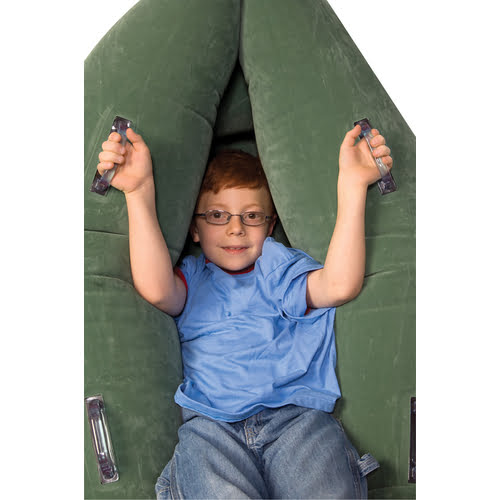
The Pea Pod for autism applies much-needed pressure to sensitive areas of the body helping your child feel grounded and in control. This cozy canoe is perfect for autism. It stirs a sense of adventure while the compression provides a calming comfort where your child can feel secure. Use this sensory processing disorder tool to add comfort and joy in your child’s life.
This toy provides deep touch pressure (DTP) in the form of firm tactile sensory input or proprioceptive input to the whole body. When administered to the whole body, this therapy (DTP) has a calming, organizing effect on children and adults alike.
DEEP PRESSURE THERAPY

With a rise in popularity over the past couple of years, people are wondering why weighted blankets are so calming.
The reason is deep pressure touch stimulation.
But, before we dive into what deep touch pressure (DTP) is, it's important to start with our body's sensory system to figure out why DTP is even an important and useful therapy to consider.
Sensory Integration is the process your central nervous system goes through when it takes information in from the environment and your body’s eight senses, processes that information, and then responds accordingly.
Your body takes information in through 8 sensory systems:
-
auditory (sound/hearing)
-
visual (sight)
-
olfactory (smell)
-
gustatory (taste)
-
tactile (touch)
-
vestibular (movement)
-
proprioceptive (input from muscles and joints)
-
interoception (internal sensors indicating physiological conditions)
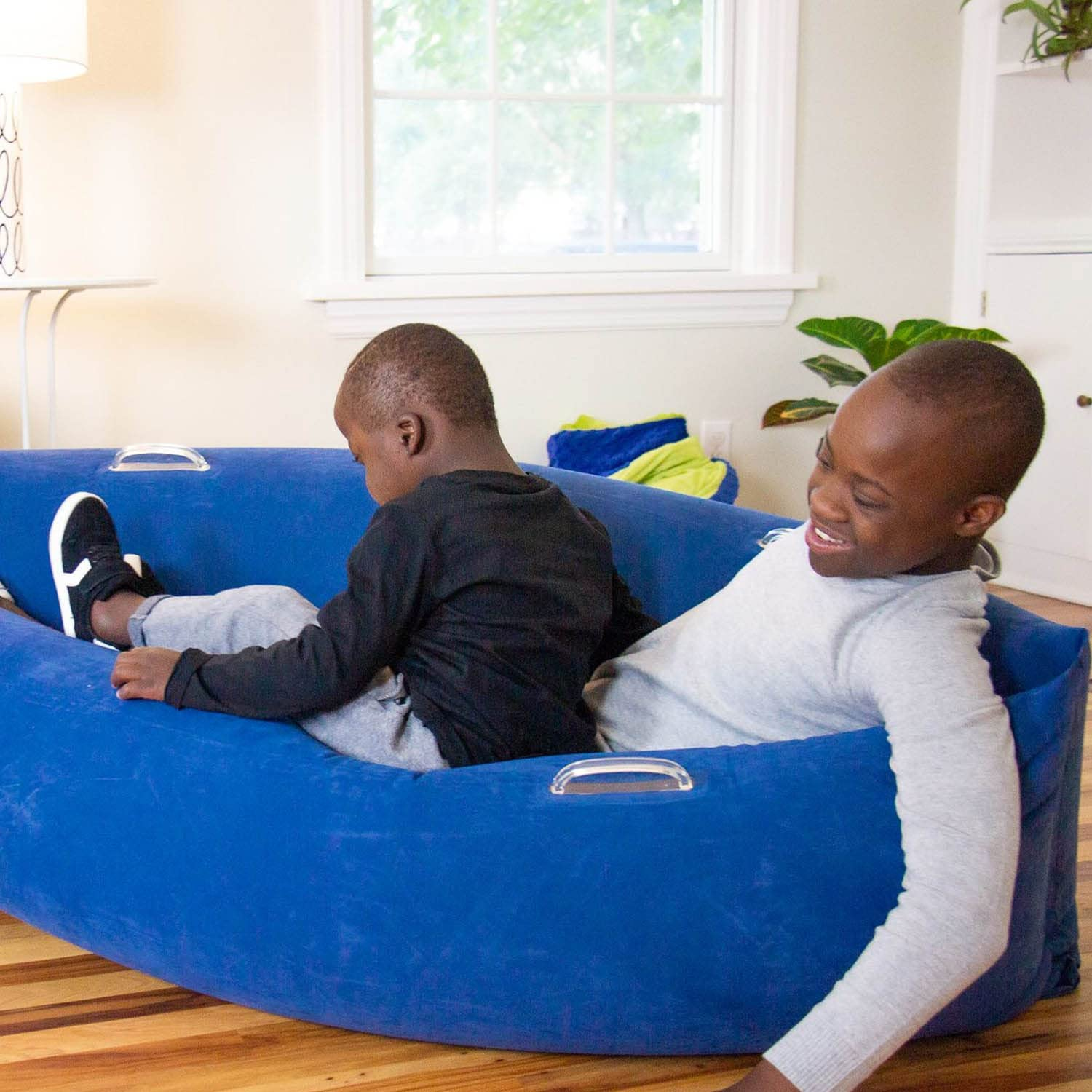
When one’s central nervous system has difficulty processing any of this sensory information, the body’s responses are atypical and can be observed in motor, language, or social-emotional difficulties.
Deep pressure or deep touch pressure therapy (DTP) is firm tactile sensory input that provides proprioceptive input to the whole body. This can consist of firm hugs, firm strokings, cuddling, hugging, squeezing, compression, or swaddling. When administered to the whole body, deep touch pressure therapy (DTP) has a calming, organizing effect on children and adults alike.
PHYSIOLOGICAL RESPONSES TO DEEP PRESSURE THERAPY

When considering your body’s physiological responses to sensory information, and your own emotional reactions, you need to consider the 3 different parts of your Autonomic Nervous System (ANS) and how those systems work together to help you function.
The autonomic nervous system is responsible for receiving information from your body and environment and sending signals out to regulate the functions of many of your body’s organs in response to that information. Think about the last time you were nervous - sweaty palms, racing heartbeat, fast breathing, and maybe even an upset stomach.
On the other hand, think about how you relax every night as you drift off to sleep - slow, deep breathing, slow heartbeat, relaxed muscles. All of those physiological responses came from your functioning autonomic nervous system (ANS).
The ANS is comprised of the parasympathetic, sympathetic, and enteric (gut) systems. Depending on the sensory information your ANS is processing, these systems work together to help you physiologically respond.
The two main systems that we are concerned with for DTP are the parasympathetic system and the sympathetic system.
THE PARASYMPATHETIC NERVOUS SYSTEM
The parasympathetic system of your autonomic nervous system is responsible for regulating involuntary functions like heart rate, blood pressure, and stimulating the digestive tract. Deep touch pressure increases this parasympathetic activity and helps slow many high energy functions of the body, thereby helping with regulation.
THE SYMPATHETIC SYSTEM
The sympathetic nervous system of your autonomic nervous system is often referred to as the “fight or flight” response that is elicited during stressful or emergency situations. Think of the adrenaline rush you experience when you’re in an accident or come across a dangerous situation. That is your sympathetic ANS at work!
Deep touch pressure decreases this “fight or flight” sympathetic activity and decreases the level of cortisol (stress hormone) which is hugely impactful for people who experience stress, anxiety, or fear on a regular basis (anxiety, PTSD, dementia, ASD).
INCREASES IN ENDORPHINS AND NEUROTRANSMITTERS
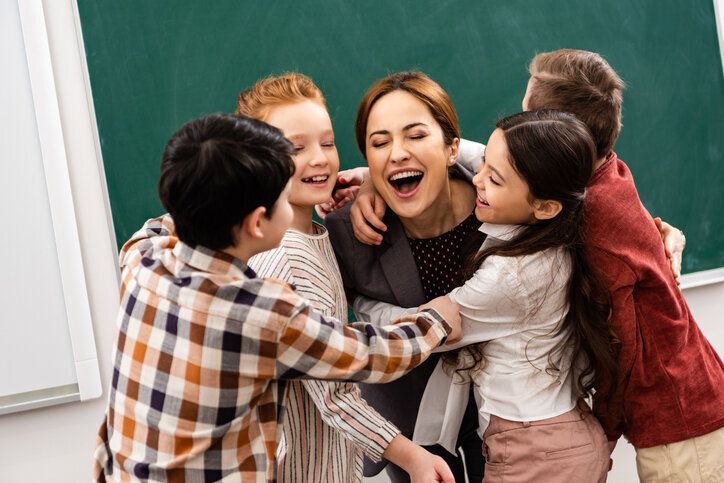
Deep touch pressure also results in increased endorphin levels and releases the “happy hormones” serotonin and dopamine. Serotonin is a neurotransmitter that helps to regulate some brain functions and help with mood regulation. It is also known to stimulate parts of the brain that are responsible for sleep and the production of melatonin.
Dopamine is a “happy hormone” that controls the reward or pleasure center of the brain. While it regulates our emotional responses and is in action when we set or achieve goals, an excess of dopamine is also linked to risk-taking and addiction.
At a physiological level, deep pressure therapy helps the two main systems in the autonomic nervous system balance each other out so as to help with emotional regulation. The increased production of serotonin and dopamine counteract the effects of cortisol to hormonally regulate your body’s response to sensory information.
OBSERVABLE EFFECTS OF DEEP PRESSURE THERAPY
Functional outcomes of deep pressure therapy are observed as:
-
Improved proprioceptive processing for increased balance
-
Improved body/spatial awareness
-
Improved coordination
-
Improved sleep
-
Increased focus/attention
-
Decreased anxiety/stress
Overall, people reported feeling more “grounded” following deep pressure input. For people who are hypersensitive to tactile input, desensitization to touch was reported over time.
WHO WOULD BENEFIT FROM DEEP PRESSURE STIMULATION THERAPY?
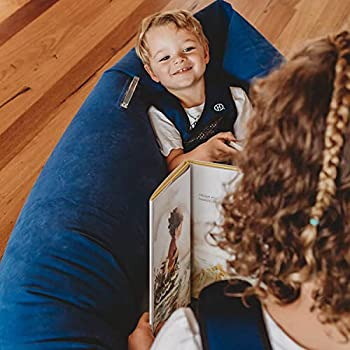
Children and adults alike are finding deep touch pressure therapy to be helpful in helping them self-regulate. People who benefit the most from DTP include those diagnosed with:
-
Autism Spectrum Disorder (ASD), - All levels of severity
-
Psychiatric disorders (mood disorder, depression, anxiety, dementia, post-traumatic stress disorder),
-
Sensory Processing Disorder (SPD).
However, as you may already know, it seems like most people benefit and enjoy the positives that deep touch pressure can give them. This is seen with the recent rise in interest with weighted blankets. They are being used for anyone who could use a little more sleep and relaxation in their lives.
Examples of deep touch pressure activities and deep pressure therapy products for kids and adults (perfect for occupational therapy) can include:
-
Rolling/wrapping a child firmly in a blanket to make a “burrito”
-
Squishing a child between two soft pillows (“sandwich”)
-
Firmly rolling a therapy ball on top of a student’s trunk, legs, and arms
-
Deep vibration to the whole body, like our New Sensory Vibrating Pillow for Special Needs
-
Wearing of weighted vests or compression garments
-
Weighted blanket use
-
Bear Hugs
-
Deep massage
-
Joint Compressions
-
Climbing under sofa cushions
-
Deep Pressure seating options like this Sensory Pea Pods
- Pea Pod chair Autism.
-
DEEP TOUCH PRESSURE THERAPY DOGS
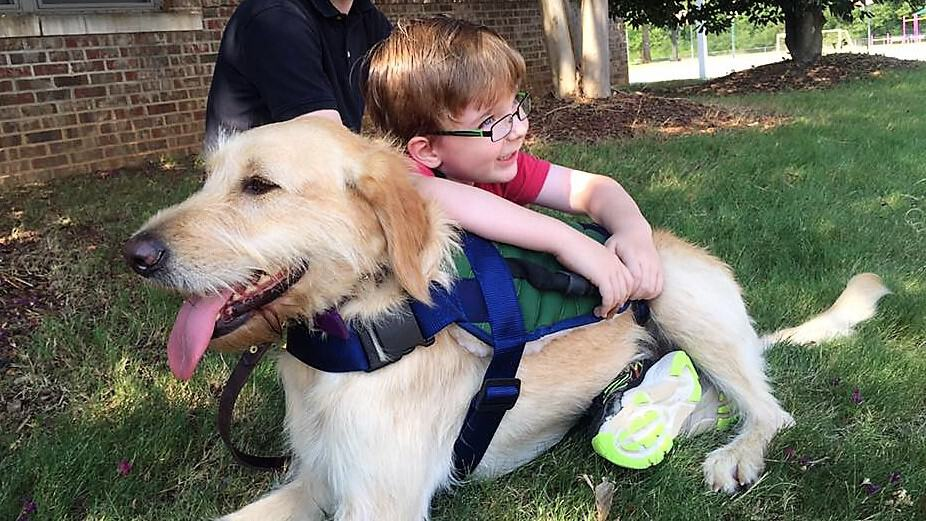
Most people wouldn’t think of therapy dogs as offering deep touch pressure to their owners, but they do!
The use of a deep touch pressure service dog benefits people with a variety of psychiatric conditions including anxiety disorder, mood disorder, dementia, post-traumatic stress disorder, and depression.
Psychiatric service dogs are specifically trained to use their body weight to apply pressure to their owner’s body during panic attacks to minimize the severity and duration of such attacks.
Be the first to get our NEW Sensory Inflatable Cozy Boat
Recommended Blog: How to Get My Child to Sleep Alone?
Teaching their children to sleep alone is one of the most daunting tasks for parents. Usually, a child won't warm up to the idea immediately. He or she might throw a fit or have trouble sleeping.
A child with autism exhibits more attachment to his or her parents. Feelings of separation, even when brief, easily stir emotional distress. That's why sleeping alone is a routine that's very hard to do.
Nonetheless, it's not impossible to teach a child under the spectrum to sleep alone, although it will take patience. Read this article that will show the most effective techniques.












8 comments
My son is turning 14 next week and is a 150 lbs and 5"6", is there something for his size?
My son is turning 14 next week. He seeks deep pressure and it’s something he needs when he’s upset, we squeeze his upper arm 3x while breathing and count 1,2,3, 3x and move to the forearm, repeat, then the hand repeat and the other arm, and finish with a bear hug. It’s like magic and calms him down.
However, he isn’t so little anymore and is 5"6" and 150lbs, is there any peapods or boats for his size?
I’m interested in the pea pod.
Would like to know how much this is.
What is the cost of the Sensory Pea Pod?
Leave a comment